Joranalogue Step 8 Handleiding
Joranalogue
Niet gecategoriseerd
Step 8
Bekijk gratis de handleiding van Joranalogue Step 8 (7 pagina’s), behorend tot de categorie Niet gecategoriseerd. Deze gids werd als nuttig beoordeeld door 93 mensen en kreeg gemiddeld 3.5 sterren uit 47 reviews. Heb je een vraag over Joranalogue Step 8 of wil je andere gebruikers van dit product iets vragen? Stel een vraag
Pagina 1/7

STEP 8
SEQUENTIAL TRACKING/SAMPLING
REGISTER
1
INTRODUC TIO N
Sequencers, sequential switches, counters,
analogue shift registers... Modular synthesisers
provide a wealth of creative sequential functions
for controlling and processing signals. Choosing
which of these to include in a system can be a
bewildering task.
Except when you don’t have to choose. Step 8
represents a new type of modular building block:
a sequential tracking/sampling register, which
can be configured to provide any of these
functions, and many more.
At its heart lies an analogue 1-to-8 signal switch
feeding an octet of stability track/sample -high -
and-hold stages. Each of these has its own
analogue output with an attenuation slider, in
addition to a gate output. LEDs visualise the
status of each stage in real time. The switch can
be controlled sequentially using the built- -in 8
step counter, or addressed directly by an
analogue control voltage (CV).
Numerous advanced circuit techniques are used
to avoid the issues that often plague analogue
switching and memory modules. The : result
totally , transparent signal paths with low noise
distortion voltage and ‘droop’, yet high
bandwidth and precision.
Add to this the ability to ‘mute’ the inactive
stages, pause the counter, reset it, change its
direction or even shift the stages on each step,
and the possibilities quickly become near-
endless. A scanning output takes things even
further, particularly making sequencer or
addressed voltage source use easy and intuitive.
For those who are feeling adventurous, there are
always more applications to try: configurable
voltage mapper, hocketing controller, clock
divider, graphic waveshaper, multi-output
analogue downsampler... Discover a new world
of sequential synthesis with Step 8.
CONTENTS
In the Step 8 box, you’ll find:
Product card, stating serial number and
production batch.
16- - -to 10 pin Eurorack power cable.
Mounting hardware: two black M3 x 6 mm
hex screws, two black nylon washers and a
hex key.
T 8 he Step module itself, in a protective
cotton bag.
If any of these items are missing, please contact
your dealer or support@joranalogue.com.

STEP 8
SEQUENTIAL TRACKING/SAMPLING
REGISTER
2
CONTROLS & CONNECTIONS
1 CYCLE/SHIFT SWITCH
The cycle/shift switch determines Step 8’s basic
operational mode. In cycle mode, the module
functions much like a sequential switch: the
input signal is passed to each output stage in
turn. Once a stage is no longer selected however,
it will hold its voltage, unlike a basic sequential
switch.
Shift mode configures the circuit as an analogue
shift register: the input signal is always passed to
the leftmost stage. During a step event, each
stage will shift its voltage to its righthand
neighbour.
2 S /ALL SWITCH OLO
When this switch is in solo mode, only the
selected analogue output will be active. The
other outputs w be ‘muted’, ill remaining at 0 V.
This is especially useful when using the module
as a sequential switch, as it may not always be
desirable for the inactive stages to hold their
voltages , as is the case in all mode.

STEP 8
SEQUENTIAL TRACKING/SAMPLING
REGISTER
3
3 TRACK/SAMPLE SWITCH
The track/sample switch determines how the
selected stage responds to changing input
voltage. Either the output simply follows the
input signal at all times (tracking), or the input
voltage is sampled once the stage becomes
active, and held thereafter (sampling).
Step 8 - -can thus function either as a track and
hold The or holdsample- -and register. low
distortion, high bandwidth and high sampling
speed ( 50 µs acquisition time) makes it suitable
for audio use, while the low leakage rate also
allows minutes- -long storage of pitch accurate
control voltages (CVs).
4 STEP BUTTON, TRIGGER INPUT AND OUTPUT
Pushing the step button or applying a rising edge
to the step input will advance the register by one
step (when the address CV input is not in use). If
the module is set to sample mode, a step trigger
will also result in a sample being taken.
The input is typically connected to a rhythmic
‘clock’ signal, setting the tempo of a full patch. A
step trigger output is provided as well,
generating a 1 e for every step. This ms, +5 V puls
signal can be used to synchronise Step 8 with
other modules, without any latency. While this
pulse width limits the trigger output frequency
to 1 kHz, the module can be at up to clocked
60 - kHz internally, for audio rate processing.
S 8tep ’s step, pause, reset and reverse inputs are
uniquely designed to be driven reliably even
from weak, slow, bipolar signals. They feature
Schmitt action, with a +2 V low and +3 V high
logic threshold.
5 STAGE SLIDERS
These sliders control the output level for each
stage, ranging from fully off to unity gain. The
LEDs on the levers visualise the positive output
voltages in real time, although negative voltages
can be processed as well.
6 SIGNAL INPUT
Connect your analogue input signal here. When
this socket is not in use, the input voltage will
come from an internal precision +5 V source.
Whenever Step 8 is powered on, the module
preloads the input voltage into all stages. For
many applications, this avoids the need to first
manually step through the stages whenever the
Eurorack system it’s part of is restarted, before
the patch works as expected.
7 PAUSE GATE INPUT
Step triggers no longer advance the register
while this input is high. However, the selected
stage’s output voltage will still be updated when
the module is configured in sample mode. This
allows for independent stepping and sampling.
8 RESET TRIGGER INPUT
A rising edge applied to the reset input causes
the register to immediately return to the leftmost
stage. This can be used to ensure the module’s
‘first step’ coincides with other modules or
external control.
The reset feature may also be used to shorten the
number of stages, anywhere from 1 to 7. Take the
gate output of the stage just to the right of the
desired final stage, and connect it to this input.
9 REVERSE GATE INPUT
A gate signal applied to this input causes the
step direction to reverse, going from right to left
rather than left to right.
10 STAGE INPUT
Th e stage input can be used to directly address
any desired stage using an external control
voltage, overriding the step, pause, reset and
reverse functions. The stages are distributed
evenly over a 0 to +5 V range.
Note that step triggers are still required to
update the selected stage’s output voltage when
the module is configured in sample mode. This
allows for independent stepping and sampling.
Product specificaties
| Merk: | Joranalogue |
| Categorie: | Niet gecategoriseerd |
| Model: | Step 8 |
Heb je hulp nodig?
Als je hulp nodig hebt met Joranalogue Step 8 stel dan hieronder een vraag en andere gebruikers zullen je antwoorden
Handleiding Niet gecategoriseerd Joranalogue

3 Juli 2024

29 Juni 2023

21 Juni 2023

20 Juni 2023

19 Juni 2023

19 Juni 2023

16 Juni 2023

15 Juni 2023

15 Juni 2023

14 Juni 2023
Handleiding Niet gecategoriseerd
- Guardian
- Ameristep
- Nec
- Miracle Smile
- Omega
- T.akustik
- Frilec
- Rademacher
- Bintec-elmeg
- Chamberlain
- Summit Audio
- Eico
- Caso
- Tempo
- Lervia
Nieuwste handleidingen voor Niet gecategoriseerd
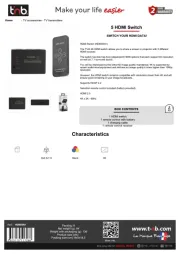
15 September 2025
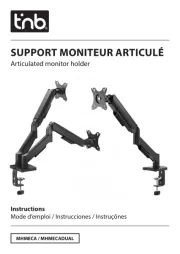
15 September 2025

15 September 2025
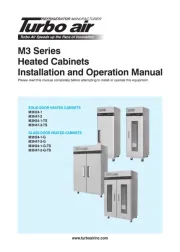
15 September 2025
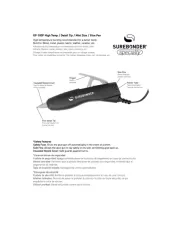
15 September 2025

15 September 2025

15 September 2025

15 September 2025
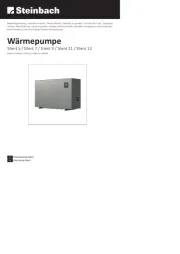
15 September 2025
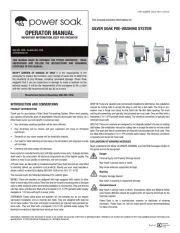
15 September 2025